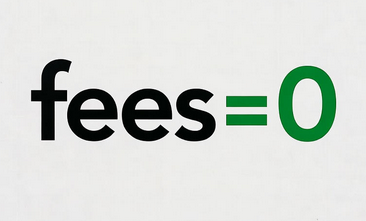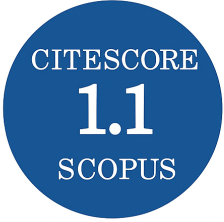Heat Stress Control Mechanisms in Military Operations
DOI:
https://doi.org/10.3849/aimt.01740Keywords:
heat illness, adaptation to heat, immersion cooling, personal cooling systemsAbstract
Heat-related illnesses are a problem for a lot of troops in the world. Thus, this work aimed to analyze the thermal stress control mechanisms applicable to troops in military operations. For this reason, it was chosen to address the following topics: basic aspects of thermoregulation in hot environments, and heat stress control mechanisms in military operations (adaptation to heat; rest, hydration, and replenishment of hydro-electrolytes; immersion cooling; and personal cooling systems). It can be concluded that some operational situations can impose thermal stress on the military beyond normal thermoregulatory capacity, requiring adequate intervention to dissipate body heat and maintain work capacity over time.
References
OLIVEIRA de, R.M., E.B. NEVES, S.E. da ROSA, R.A. MARSON, R.G. de SOUZA VALE, J.J.M. MORGADO, W. de ASSIS LACERDA, Jr., R.S.P. SOEIRO and R. de ALKIM MOREIRA NUNES. Effect of 6 Months of Physical Training on the Physical Fitness of Young Brazilian Army Cadets. Healthcare, 2021, 9(11), 1439. DOI 10.3390/healthcare9111439.
PARSONS, I.T., M.J. STACEY and D.R. WOODS. Heat Adaptation in Military Personnel: Mitigating Risk, Maximizing Performance. Frontiers in Physiology, 2019, 10, 1485. DOI 10.3389/fphys.2019.01485.
BULLER, M.J., S.K. DELVES, A.L. FOGARTY and B.J. VEENSTRA. On the Real-Time Prevention and Monitoring of Exertional Heat Illness in Military Personnel. Journal of Science and Medicine in Sport, 2021, 24(10), pp. 975-981. DOI 10.1016/j.jsams.2021.04.008.
NYE, N.S. and F.G. O’CONNOR. Exertional Heat Illness Considerations in the Military. In: ADAMS, W. and J. JARDINE, ed. Exertional Heat Illness. New York: Springer, 2020, pp. 181-209. ISBN 978-3-030-27804-5.
JOVANOVIĆ, D., R. KARKALIC, S. ZEBA, M. PAVLOVIĆ and S.S. RADAKOVIĆ. Physiological Tolerance to Uncompensated Heat Stress in Soldiers: Effects of Various Types of Body Cooling Systems. Vojnosanitetski Pregled, 2014, 71(3), pp. 259-264. DOI 10.2298/vsp120731045j.
NEVES, E.B., R.M. CUNHA, C. ROSA, N.S. ANTUNES, I.M.V. FELISBERTO, J. VILAÇA-ALVES and V.M. REIS. Correlation between Skin Temperature and Heart Rate During Exercise and Recovery, and the Influence of Body Position in These Variables in Untrained Women, Infrared Physics & Technology, 2016, 75, pp. 70-76. DOI 10.1016/j.infrared.2015.12.018.
SCHLADER, Z.J., T.E. WILSON and C.G. CRANDALL. Mechanisms of Orthostatic Intolerance During Heat Stress. Autonomic Neuroscience, 2016, 196, pp. 37-46. DOI 10.1016/j.autneu.2015.12.005.
CRAMER, M.N. and O. JAY. Biophysical Aspects of Human Thermoregulation During Heat Stress. Autonomic Neuroscience, 2016, 196, pp. 3-13. DOI 10.1016/j.autneu.2016.03.001.
SALAMUNES, A.C.C., A.M.W. STADNIK and E.B. NEVES. The Effect of Body Fat Percentage and Body Fat Distribution on Skin Surface Temperature with Infrared Thermography. Journal of Thermal Biology, 2017, 66, pp. 1-9. DOI 10.1016/j.jtherbio.2017.03.006.
NEVES, E.B., A.C.C. SALAMUNES, R.M. de OLIVEIRA and A.M.W. STADNIK. Effect of Body Fat and Gender on Body Temperature Distribution. Journal of Thermal Biology, 2017, 70(Part B), pp. 1-8. DOI 10.1016/j.jtherbio.2017.10.017.
ASHWORTH, E.T., J.D. COTTER and A.E. KILDING. Methods for Improving Thermal Tolerance in Military Personnel Prior to Deployment. Military Medical Research, 2020, 7(1), pp. 1-17. DOI 10.1186/s40779-020-00287-z.
DAANEN, H.A.M., S. RACINAIS and J.D. PÉRIARD. Heat Acclimation Decay and Re-Induction: A Systematic Review and Meta-Analysis. Sports Medicine, 2018, 48(2), pp. 409-430. DOI 10.1007/s40279-017-0808-x.
STACEY, M.J., I.T. PARSONS, D.R. WOODS, P.N. TAYLOR, D. ROSS and S.J. BRETT. Susceptibility to Exertional Heat Illness and Hospitalisation Risk in UK Military Personnel. BMJ Open Sport & Exercise Medicine, 2015, 1(1), 000055. DOI 10.1136/bmjsem-2015-000055.
GARRETT, A.T., N.J. REHRER and M.J. PATTERSON. Induction and Decay of Short-Term Heat Acclimation in Moderately and Highly Trained Athletes. Sports Medicine, 2011, 41, pp. 757-771. DOI 10.2165/11587320-000000000-00000.
Management of Heat and Cold Stress Guidance to NATO Medical Personnel [online]. Brussels: NATO, 2013 [viewed 2022-01-09]. ISBN 978-92-837-0182-8. Available from: https://apps.dtic.mil/sti/pdfs/ADA602345.pdf
LEE, J.K.W., R.W. KENEFICK and S.N. CHEUVRONT. Novel Cooling Strategies for Military Training and Operations. Journal of Strength & Conditioning Research, 2015, 29(Suppl 11), pp. S77-S81. DOI 10.1519/jsc.0000000000001086.
MACHADO-MOREIRA, C.A., A.C. VIMIEIRO-GOMES, E. SILAMI-GARCIA, and L.O.C. RODRIGUES. Exercise Fluid Replacement: Is Thirst Enough? Revista Brasileira de Medicina do Esporte [online], 2006, 12(6), pp. 361-364 [viewed 2022-01-30]. Available from: https://www.scielo.br/j/rbme/a/7QD5xyBKdjsGf7KRqqkKGCK/?format=pdf&lang=en
DEGROOT, D.W., R.P. GALLIMORE, S.M. THOMPSON and R.W. KENEFICK. Extremity Cooling for Heat Stress Mitigation in Military and Occupational Settings. Journal of Thermal Biology, 2013, 38(6), pp. 305-310. DOI 10.1016/j.jtherbio.2013.03.010.
LIVINGSTONE, S.D., R.W. NOLAN and S.W. CATTROLL. Heat Loss Caused by Immersing the Hands in Water. Aviation, Space, and Environmental Medicine, 1989, 60(12), pp. 1166-1171. ISSN 0095-6562.
GIESBRECHT, G.G., C. JAMIESON and F. CAHILL. Cooling Hyperthermic Firefighters by Immersing Forearms and Hands in 10 °C and 20 °C Water, Aviation, Space, and Environmental Medicine, 2007, 78(6), pp. 561-567. ISSN 0095-6562.
SELKIRK, G.A., T.M. McLELLAN and J. WONG. Active Versus Passive Cooling During Work in Warm Environments While Wearing Firefighting Protective Clothing. Journal of Occupational and Environmental Hygiene, 2004, 1(8), pp. 521-531. DOI 10.1080/15459620490475216.
MORRISSEY, M. and F. WANG. Air and Water Perfusion-Based Personal Cooling Systems (PCSs) to Protect against Heat Stress in Protective Clothing. In: WANG, F. and C. GAO, ed. Protective Clothing. Amsterdam: Elsevier, 2014, pp. 296-315. ISBN 978-1-78242-032-3.
Downloads
Published
License
Copyright (c) 2022 Advances in Military Technology

This work is licensed under a Creative Commons Attribution-NonCommercial 4.0 International License.
Authors who publish with this journal agree to the following terms:
1. Authors retain copyright and grant the journal right of first publication with the work simultaneously licensed under a Creative Commons Attribution License that allows others to share the work with an acknowledgement of the work's authorship and initial publication in this journal.
2. Authors are able to enter into separate, additional contractual arrangements for the non-exclusive distribution of the journal's published version of the work (e.g., post it to an institutional repository or publish it in a book), with an acknowledgement of its initial publication in this journal.
3. Authors are permitted and encouraged to post their work online (e.g., in institutional repositories or on their website) prior to and during the submission process, as it can lead to productive exchanges, as well as earlier and greater citation of published work.
Users can use, reuse and build upon the material published in the journal for any purpose, even commercially.






